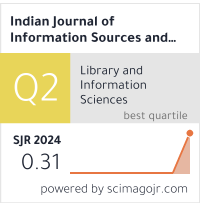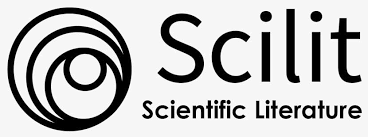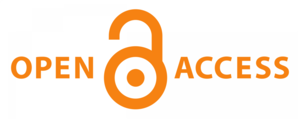Emerging Technology and Innovation of Library Services using Open Source Software (FOSS) in Academic Environment: A Current Trends
DOI:
https://doi.org/10.51983/ijiss.2014.4.2.409Keywords:
Emegring Technology, Open Source, Dspace, Eprints, LMS, Library ServicesAbstract
Open access to knowledge and information as we may see from this listing has a long way to go.With the availability of advanced ICTs and by building up the necessary infrastructure particularly in academic institutes, this will becomes an active contributor to global open-access literature. It is largely achievable is a country where policy frameworks, institutional frameworks, information infrastructure, trained manpower, and financial resources are adequately available. The information infrastructure in a country consists of telecommunications network, strategic information systems, policy and legal frameworks affecting their deployment, as well as skilled human resources needed to develop and use it.This paper This paper describes the importance of open source software and its characteristics, and need for the open Source software and procedure.
References
Harnad, S. (1995). A subversive proposal. In A. Okerson & J. O’Donnell (Eds.), Scholarly Journals at the Crossroads. Association of Research Libraries, Washington, DC. Retrieved from www.ecs.soton.ac.uk/harnad/subvert.html
Muir, S. P. (2005). An introduction to the open source software issues. Library Hi Tech, 23(4), 465-468.
Rhyno, A. (2004). Using Open Source Systems for Digital Libraries. Libraries Unlimited, London.
Simpson, P. (2006). Repositories for research: Southampton’s evolving role in the knowledge cycle. Program: Electronic Library and Information Systems, 40(3), 224-231.
Smith, M., et al. (2003). DSpace: an open source dynamic digital repository. DLib Magazine, 9(1). Retrieved from www.dlib.org/dlib/january03/smith/01smith.html
Sutradhar, B. (2006). Design and development of an institutional repository at the Indian Institute of Technology Kharagpur. Program: Electronic Library and Information Systems, 40(3), 244-255.
Willinsky, J. (2003). The nine flavors of open access scholarly publishing. Journal of Postgraduate Medicine, 49(3).
Witten, I. H., Loots, M., Trujillo, M. J., & Bainbridge, D. (2002). The promise of digital libraries in developing countries. The Electronic Library, 20(1), 7-13.
Johnson, R. K. (2002). Institutional repositories: partnering with faculty to enhance scholarly communication. D-Lib Magazine, 8(11). Retrieved from www.dlib.org/dlib/november02/johnson/11johnson.html
Bailey, C. W. (2005). Open Access Bibliography: Liberating Scholarly Literature with E-Prints and Open Access Journals. Washington, D.C., Association of Research Libraries. Retrieved from www.digital-scholarship.com/oab/oab.pdf
Barton, M., et al. (2003). Planning for institutional repositories in the United Kingdom. SCONUL Newsletter, (29), 56-59. Retrieved from www.sconul.ac.uk/publications/newsletter/29/15.PDF
Crow, R. (2002). The case for institutional repositories: a SPARC position paper. Retrieved from www.arl.org/sparc/IR/ir.html and www.arl.org/sparc/IR/IR_Final_Release_102.pdf
Prosser, D. C. (2005). Open access: the future of scholarly communication? ALISS Quarterly, 1(1), 8-11.
Downloads
Published
How to Cite
Issue
Section
License
Copyright (c) 2014 The Research Publication

This work is licensed under a Creative Commons Attribution-NonCommercial-NoDerivatives 4.0 International License.









